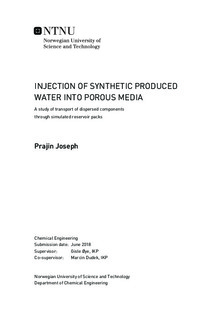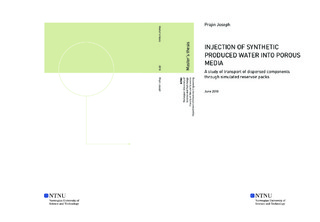| dc.description.abstract | Produced water(PW) contributes to the largest volume byproduct from the oil production industry. The presence of hazardous chemicals makes the handling of PW an important and costly operation. Methods such as discharge into the ocean, beneficial reuse, and re-injection into the well formation
to maintain the well pressure and also to enhance the oil recovery are being practiced currently.
Discharge into the ocean was the most preferable option until a few years back. Increased concern about the environment caused the formation of pollution control authorities all over the world which
enacted stringent quality requirements prior to the discharge. These strict regulations caused the
treatment of PW more costly forcing the companies to look for alternatives. In the recent years, the use of produced water as re-injection fluid has been increased due to both environmental and economical reasons. The transport mechanism and effects of different parameters need to be understood in order to design a suitable and economical treatment method. Numerous laboratory-based experiments are conducted so far, mostly core flooding experiments. Still, a clear image of the fate of the droplets inside the porous medium is missing. A real-time observation of the porous medium during emulsion transport will give a better understanding of the transport mechanism. This is the main idea behind this project.
In this project, the validity of the deep bed filtration model was tested using a purpose-built cell. The results obtained were agreeing to that observed in most of the core flooding experiments. Furthermore, the effect of different parameters on emulsion transport such as flow rate, ratio of droplet size to pore size, salinity, and the chemical composition of the dispersed phase. Model emulsions made of hexadecane, two crude oil distillate cuts having different densities were used to study the effect of different parameters. Finally, a more realistic study was done using an oil in water emulsion made of crude oil to study the same parameters. The analysis of inlet and outlet initial droplet size distribution along with the visual observation of the cell helped in understanding the flow mechanism and the effect of different parameters. | en |

